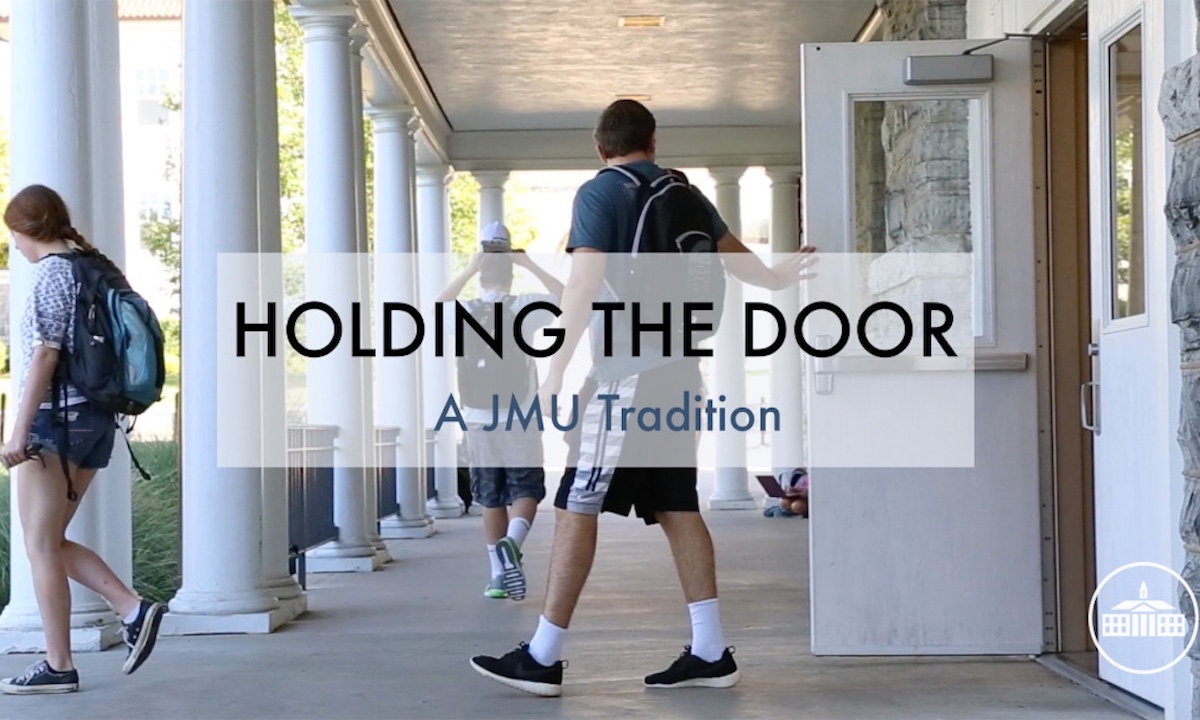
Imagine having to be on guard all of the time because of your membership in a marginalized group. If others found out about that part of you, your parents might withdraw their financial support, so you couldn't stay in school. Professors might grade your work differently or even fail you for incorporating your genuine and unique perspective into your coursework. Your friends might suddenly stop inviting you to parties and ignore you at school. And you could legally be fired from your job if others found out. For lesbian, gay, bisexual, transgender, queer, and other sexual and gender minorities (LGBTQ+ people), often no place feels safe. No one is safe to tell, because of potentially devastating consequences and uncertain confidentiality.
Photo with permission from The Daily Duke
Because our LGBTQ+ students, faculty, and staff can sometimes feel invisible on our campus and may experience the climate as uninviting or even hostile, we display the safe zone symbol to send a welcoming message to LGBTQ+ students and colleagues. Our message is one of understanding, non-judgment, confidentiality, and basic knowledge about the needs and concerns sexual and gender minorities. It is symbolic of a willingness and a commitment on our part to provide an atmosphere of acceptance, assistance, and advocacy.
Safe Zone is an unfunded voluntary network of JMU community members, not formally a part of the university. This is especially important in the context of of a public university during an era of political uncertainty, because our relative independence allows us to advocate and operate separately from political interests outside our mission. We are, however, lucky to work and study in a supportive environment. In particular, we are grateful to JMU for non-discrimination and anti-harassment policies, for the support of the SOGIE Program (Sexual Orientation, Gender Identity and Expression) for resources, rooms, and student panels that support our workshops.
According to a CNN summary of the FBI's 2016 report, hate crimes spiked 4%, nationally, after the 2016 presidential election, reaching a 5-year high, and crimes based on sexual orientation were among those to experience a recent increase. Sexual orientation bias represents the third highest category of reported hate crimes (after race and religion). Hate crimes based on gender identity jumped 44% since 2015, though presumably, much of that difference comes from an increased willingness to report such crimes.
These statistics illustrate the need for programs that promote awareness and tolerance. Keep in mind that these are just based on reported instances and crimes.
Based on the 2003 National School Climate Survey: the School Related Experiences of Our Nation's Lesbian Gay, Bisexual and Transgender Youth:
- 84% of GLBT youth reported being verbally- and 39% physically- harassed because of their sexual orientation
- 64% GLBT youth reported feeling unsafe at their school because of their sexual orientation
From "Straight Talk about Homosexuality" by Diversity Works, Inc.:
- 30% of teenagers who commit suicide are gay, lesbian, bisexual or transgender.
- 50% of teenagers who are kicked out of their homes in NYC are gay, lesbian, bisexual, or transgender (1991 study).
- One in three LGBT individuals has a drug or alcohol dependence problem (Pride Institute Report).
- One in four gay men and one in seven lesbians will be physically attacked at some point in their lives (National Gay and Lesbian Task Force, 1990).
- LGBT individuals are seven times more likely to be attacked (Pennsylvania Justice Department, 1990)
